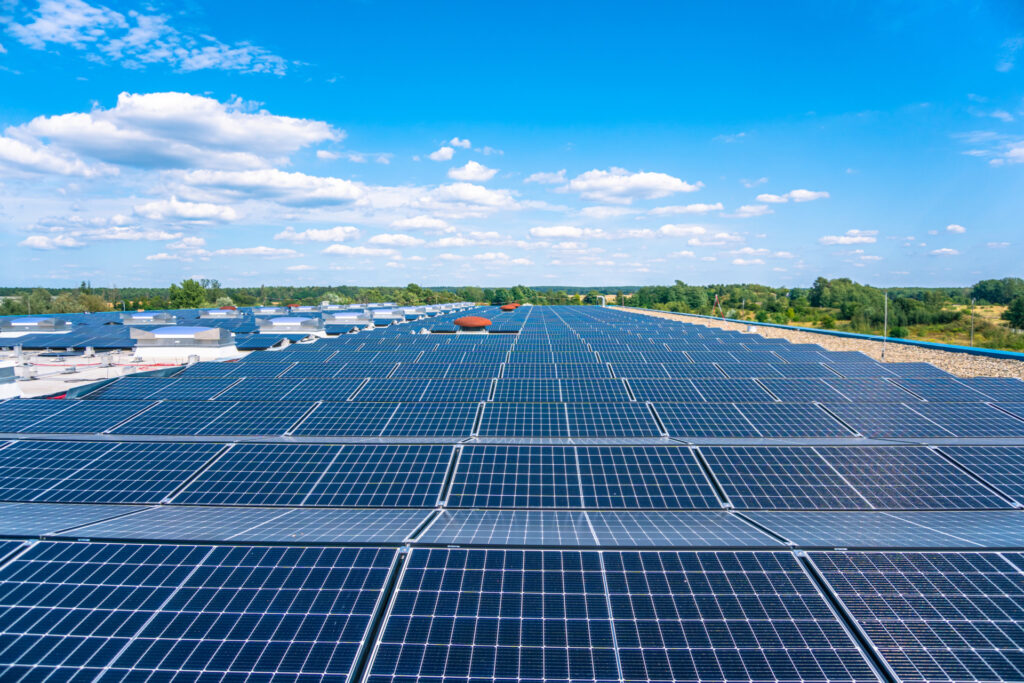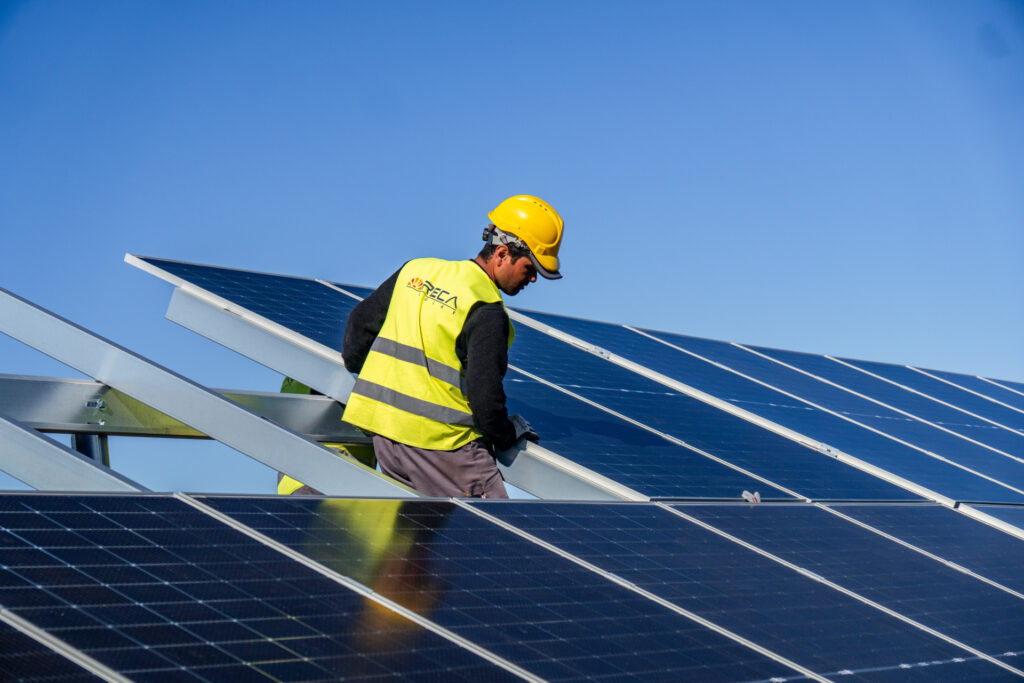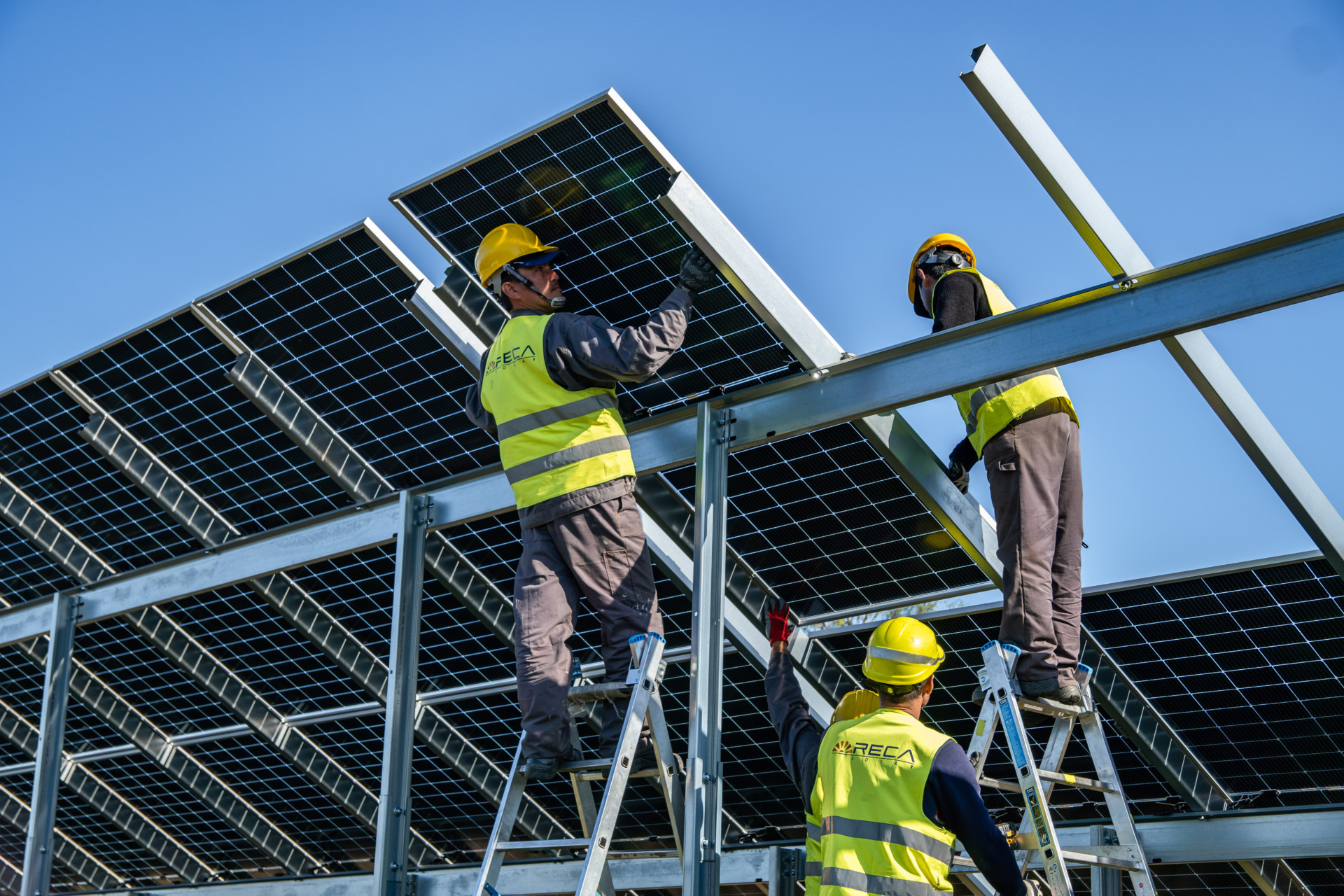Professional Installation of Photovoltaic Systems. How to Do it Right and What to Consider?
The correct installation of photovoltaic modules is a task for professionals. It
requires both knowledge and specific skills. The installers make
decisions that are important for the longevity and efficiency of the system, and carry out
the installation of the photovoltaic system, which is by no means a simple task.
How is it done and what should be considered? We explain!
Suitable Mounting Systems – Photovoltaic Systems on Open Areas and on
Roofs
First of all, it’s important to understand that there is no universally applicable
guide for the installation of photovoltaic systems. When it comes to
mounting systems, photovoltaics offer many different solutions. Firstly,
solar modules can be installed both on a roof and on open ground. The
workflow is then completely different and different substructures are used.

Although installing PV roof systems requires climbing to heights, which presents a certain difficulty, the mounting of the photovoltaic modules themselves is usually easier. It’s simply a matter of mounting anchors, attaching small support structures to them, and then attaching modules. For the installation of a photovoltaic system on open ground, larger support structures must be used and firmly anchored in the ground. For this, the supports are driven into the ground or into a concrete block. Before starting the work, the type and quality of the soil, especially its density, must be checked. Based on this, suitable brackets for photovoltaic modules are selected.

Orientation, Inclination, and No Shading
Do you know what determines the efficiency of photovoltaic systems? Of course, the efficiency of the respective modules is important, but the installation of the photovoltaic system is also crucial. What does this mean specifically? As far as the construction is concerned, a photovoltaic system requires exposure to sunlight. The more rays that reach the surface of the modules and the longer this lasts, the more electricity is generated. Therefore, when installing photovoltaic systems, three aspects are particularly important:
- Correct orientation of modules – modules facing south generate the most energy. Under certain circumstances, however, an east-west photovoltaic system may be a better choice. This mainly depends on how much electricity is consumed at certain times.
- Optimal tilt angle – depending on the latitude and orientation of the system, the modules should be tilted accordingly. The idea is to position the modules so that they are directly facing the sun for as long as possible.
- No shading– any shadow falling on the modules means a reduction in efficiency. Therefore, when installing photovoltaic modules, care must be taken to ensure that there are no objects nearby that could cast a shadow on the surface of the modules.
Installation of Photovoltaic Modules and Accessories
A photovoltaic system is not just about the modules. There are also, for example, the substructures that we have already mentioned. Choosing the right mounting system and correctly attaching it to the roof or anchoring it in the ground is a prerequisite for years of efficient operation of a photovoltaic system. To put the system into operation and benefit from the generation of green energy, it is also necessary to take care of the installation of the following components:
- Cables,
- Inverters,
- Energy storage or meters,
- Protection devices.
There are various options when selecting cables. Most commonly, copper or aluminum cables are used. It is important to choose the right cable cross-section that is adapted to the amount of energy generated by the system. An inverter, also called a power converter, is a device responsible for converting direct current into alternating current so that the generated energy can be used in power outlets. The choice of inverter also depends on the amount of energy from the system.

It should not be forgotten that the photovoltaic system does not produce electricity at night, and in winter, power generation is far less efficient. During this time, the surpluses generated on sunny summer days are used. This is possible by drawing electricity from the grid. For this, you need a meter that measures the fed-in and drawn electricity. However, with the installation of photovoltaic modules, a storage system is increasingly being installed as well. An electricity storage system absorbs excess energy and allows it to be used free of charge at any time.
Regarding protective devices, these are mainly surge protection and fire protection switches. Fire alarms are also useful. All of this serves to prevent damage to the modules and dangers to their users.
Professional Competence of the Executing Company
The installation of photovoltaic systems usually follows a specific scheme. However, each project is different and requires a certain degree of flexibility. Knowledge is necessary and a lot of experience is very helpful to tailor the implementation process to individual needs. Therefore, it is advisable to leave the mounting of the support structure for photovoltaic modules and the installation of the modules themselves to professionals. They are able to choose the type of mounting for the substructure and the arrangement of the modules accordingly. They can precisely determine the optimal orientation of the modules and their tilt angle. Moreover, they have a good sense of how to fasten the substructures, ensuring that all screws and connections are appropriately strong. A lack of intuition in this area would lead to damaged threads and imminent repair of the system.
